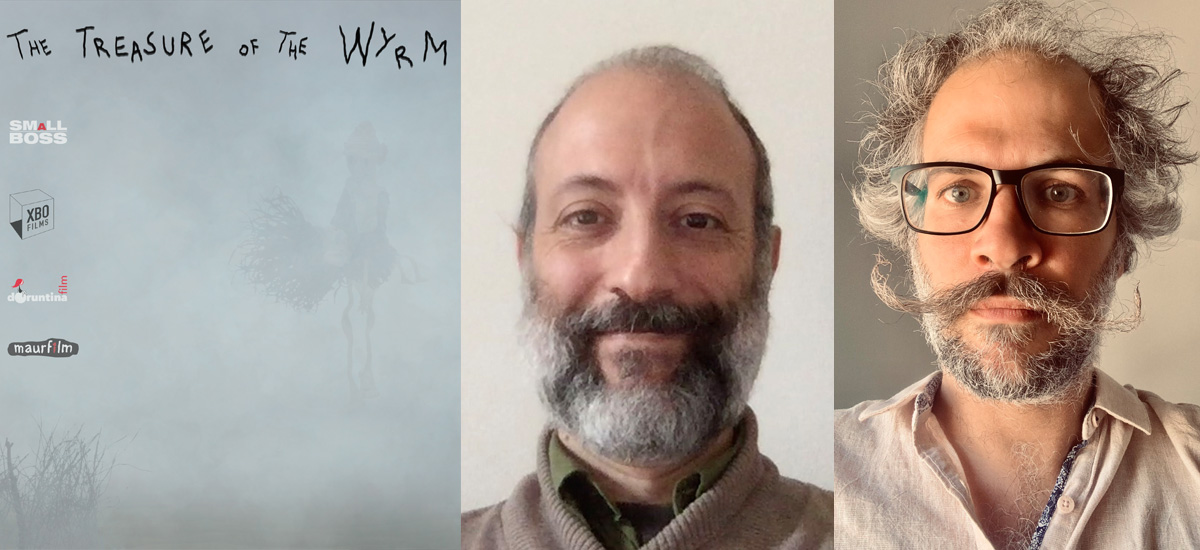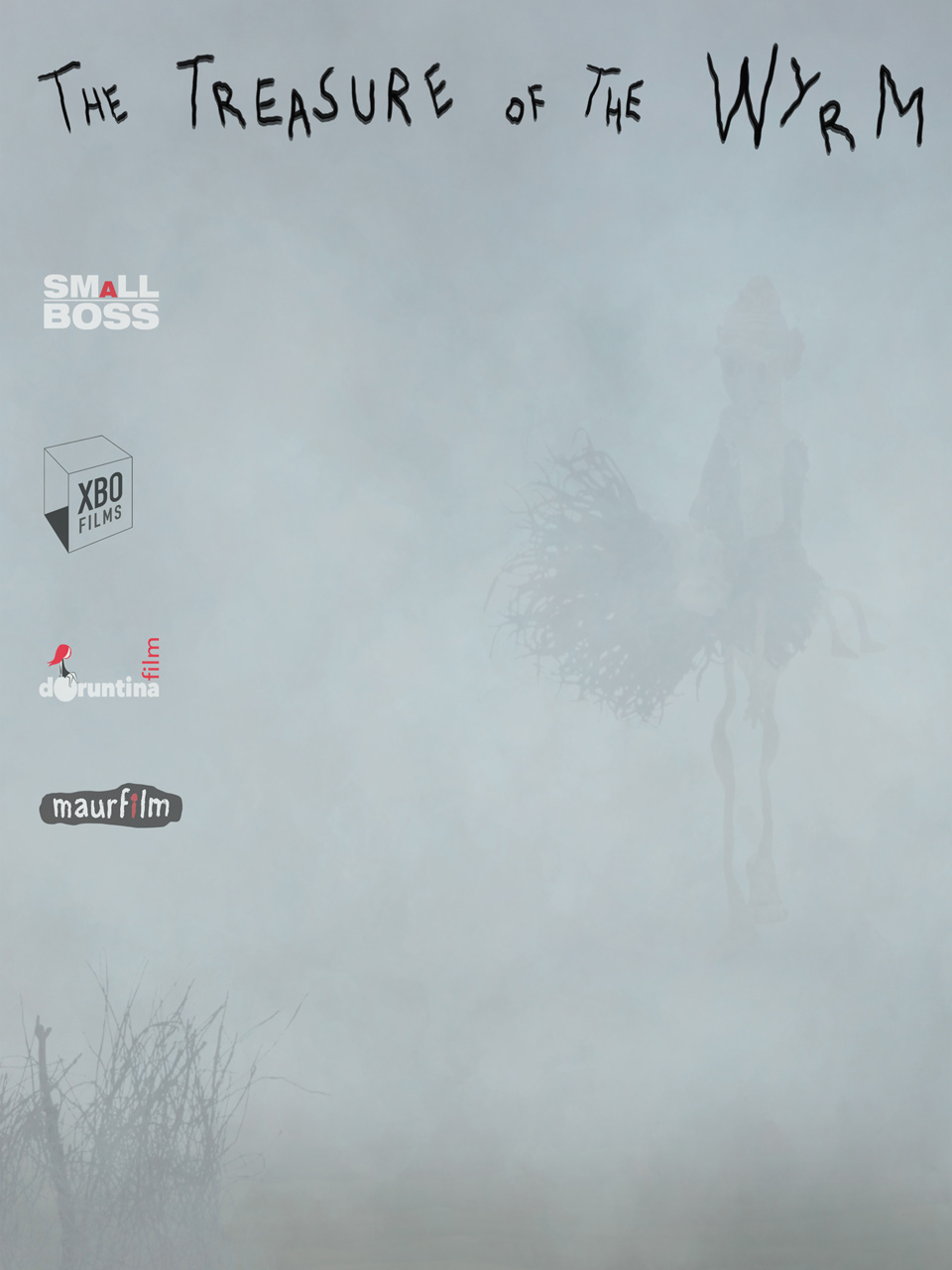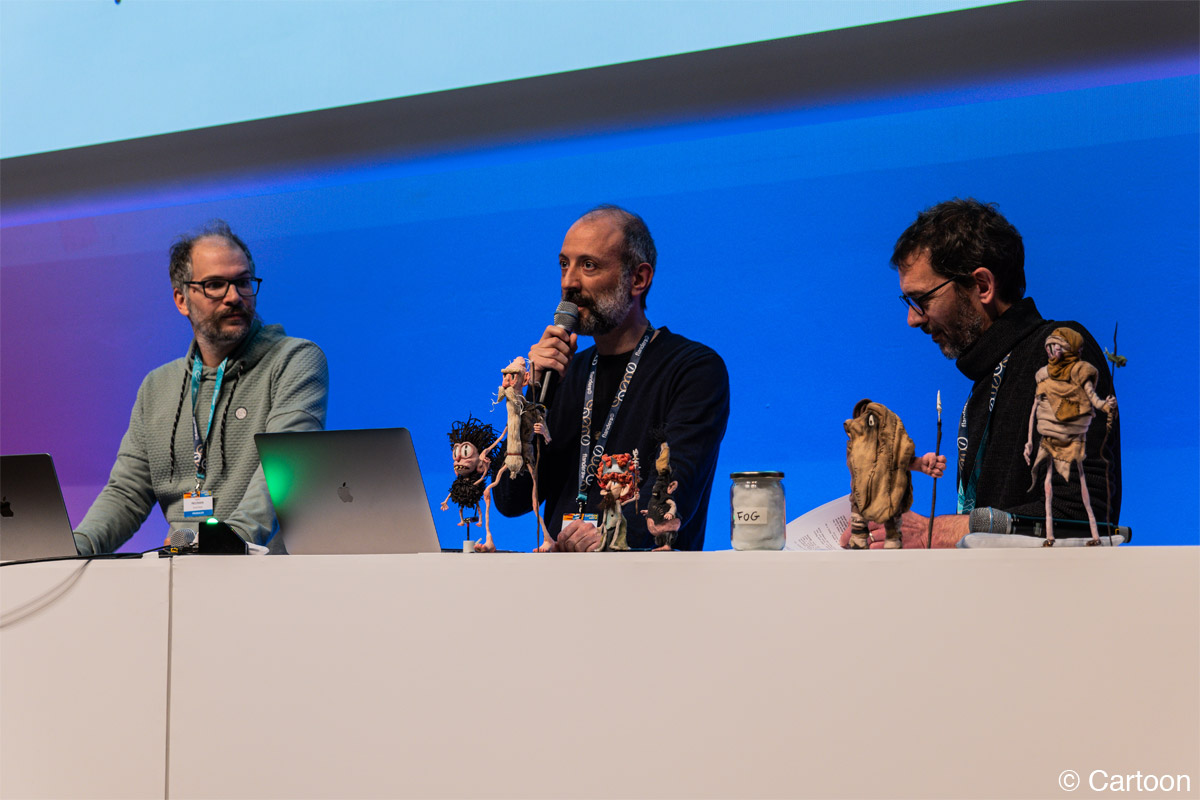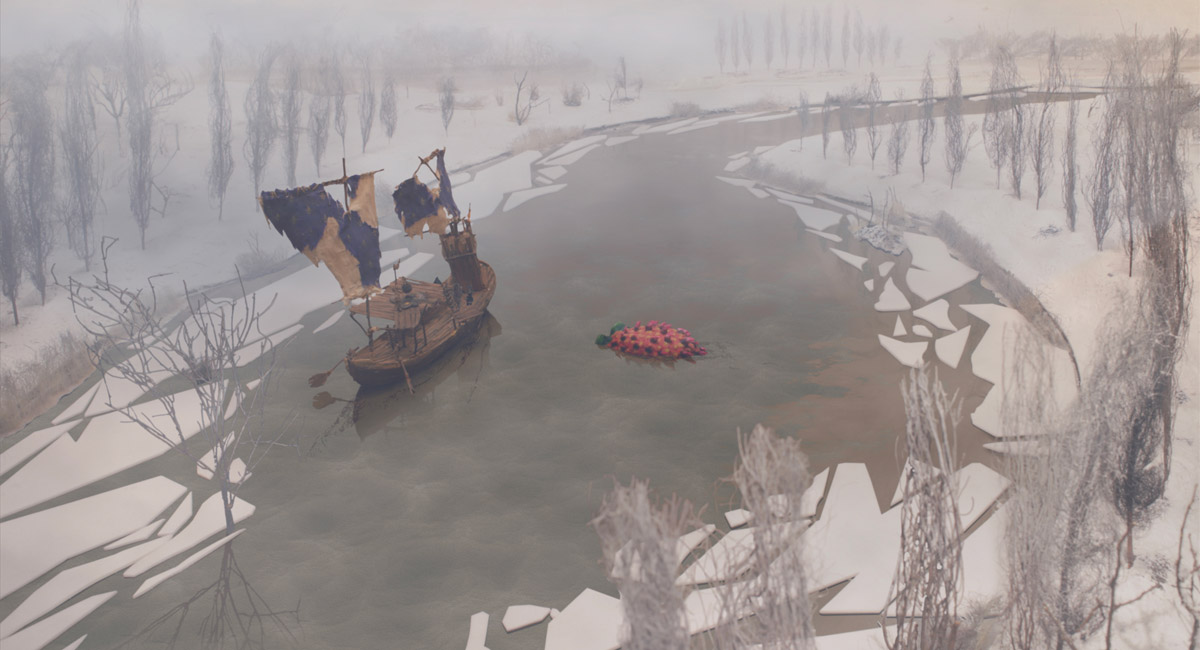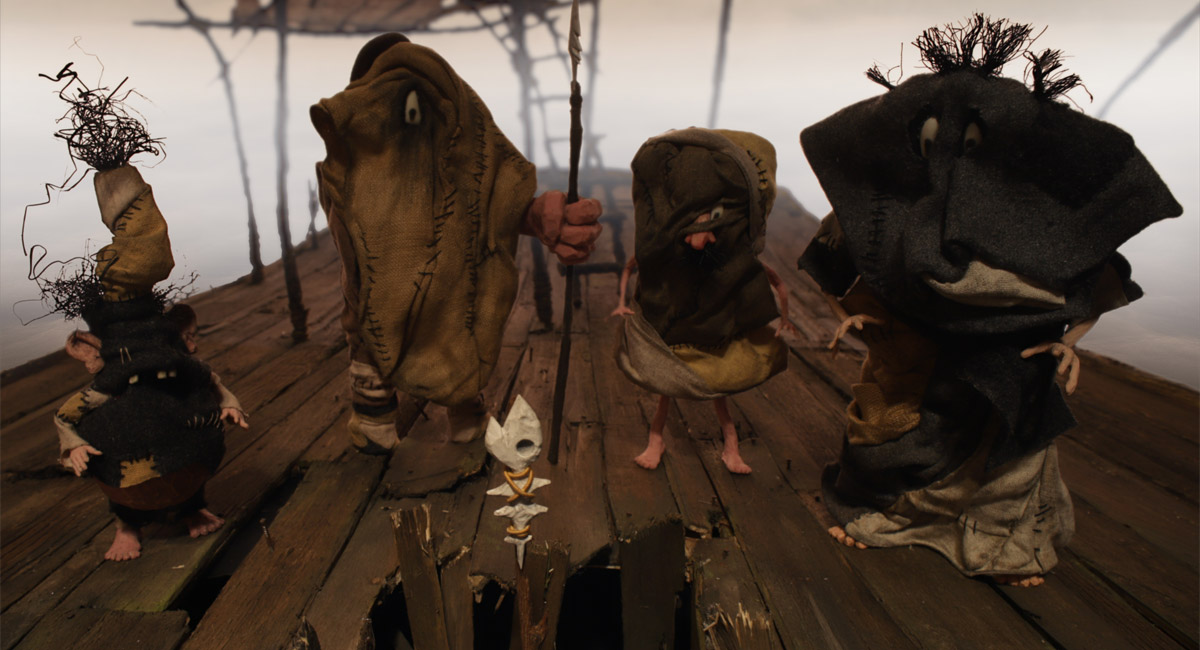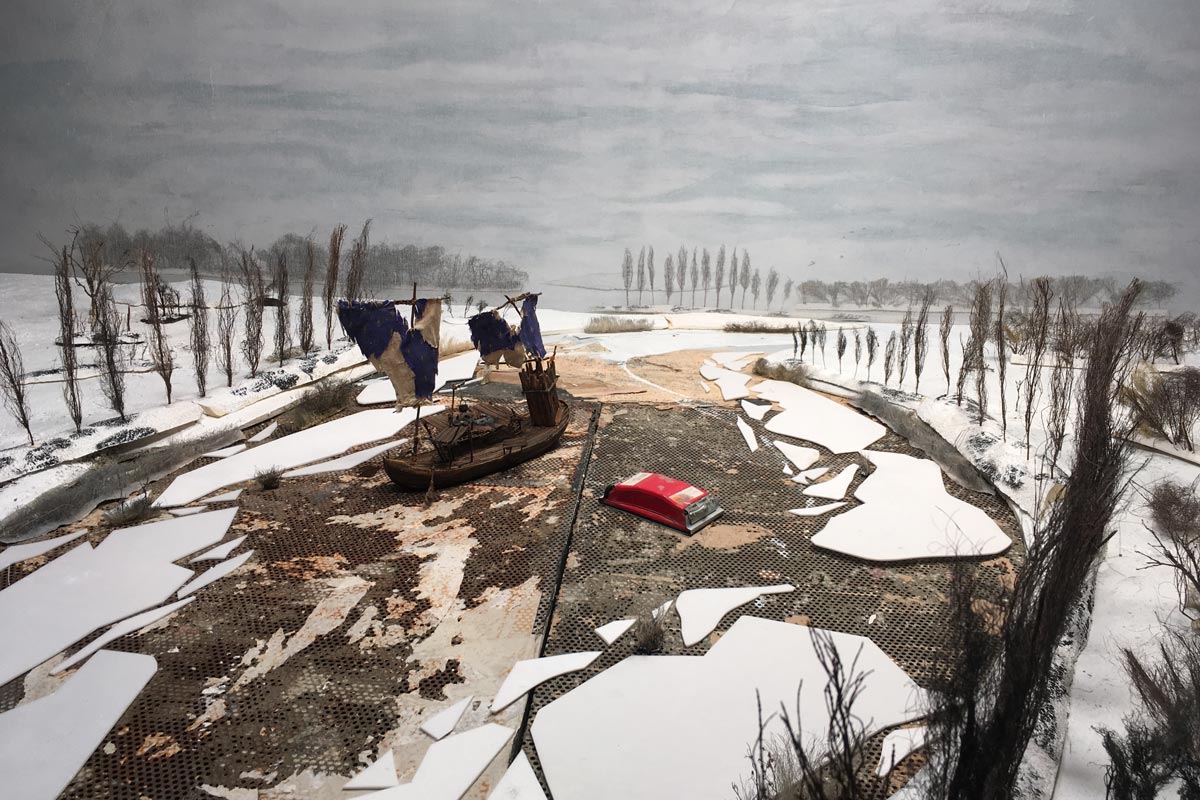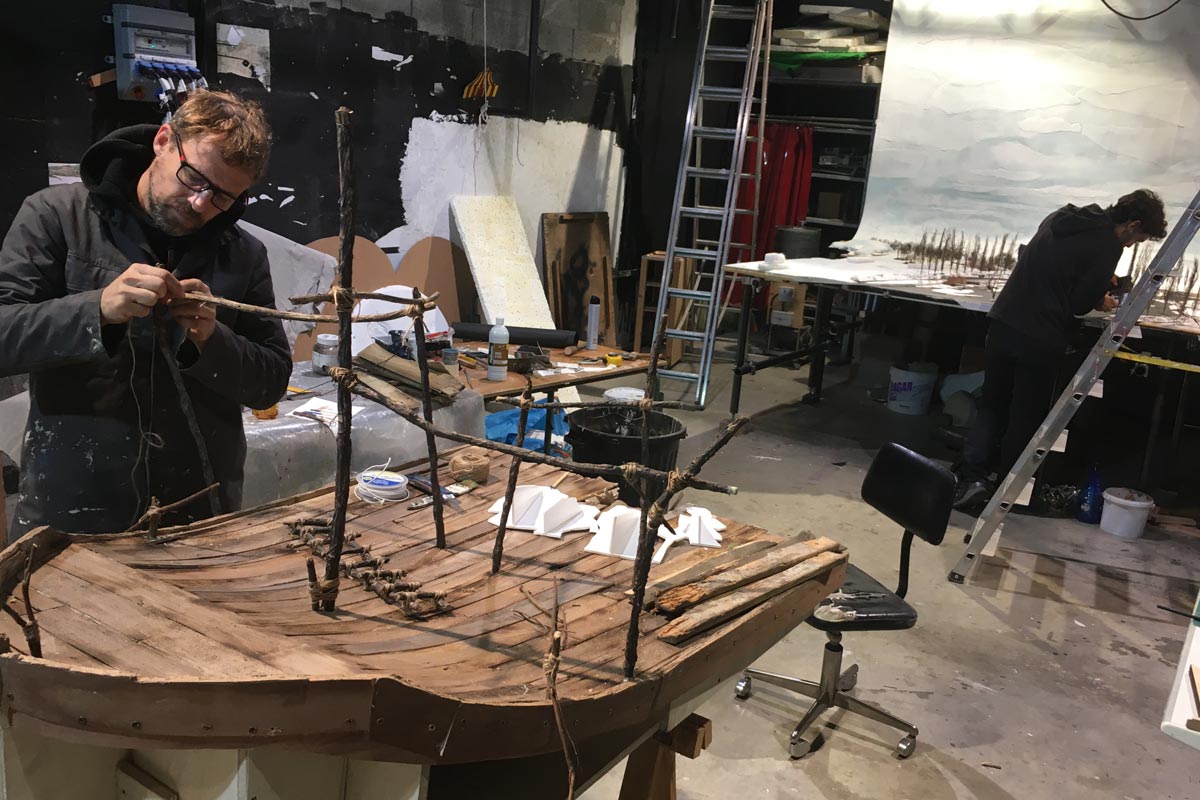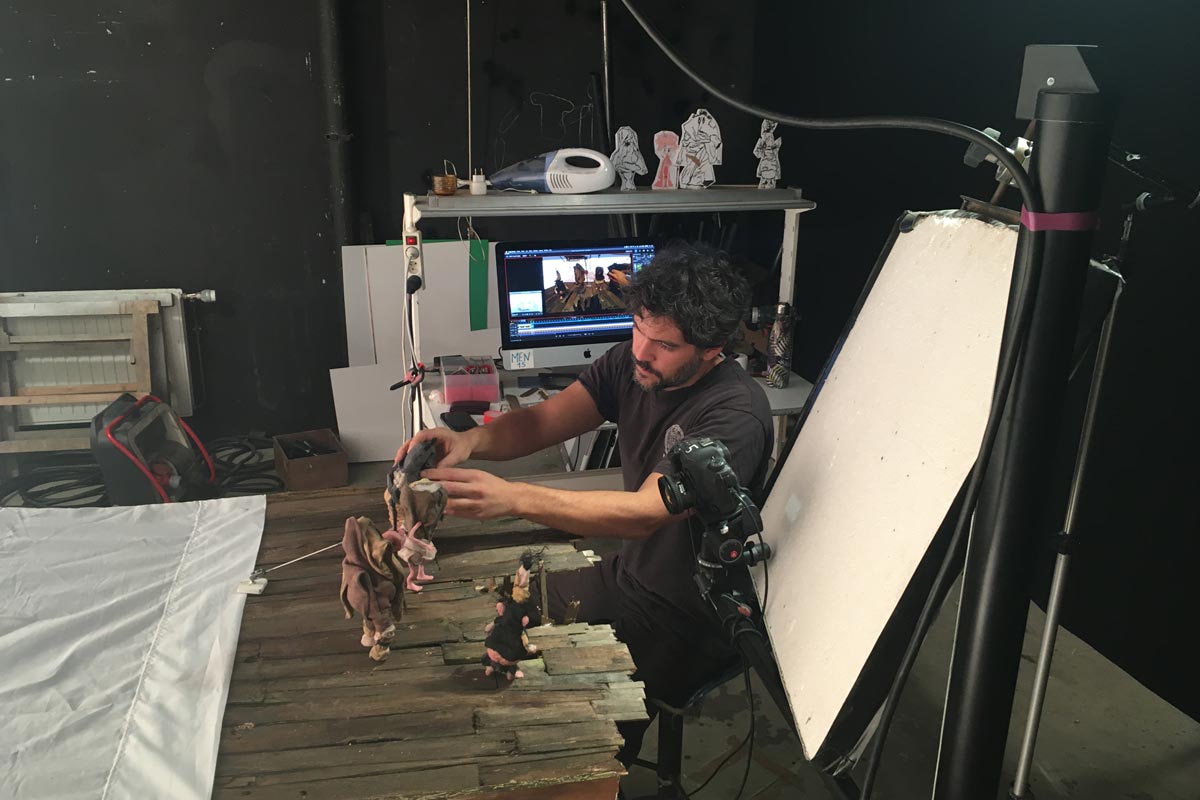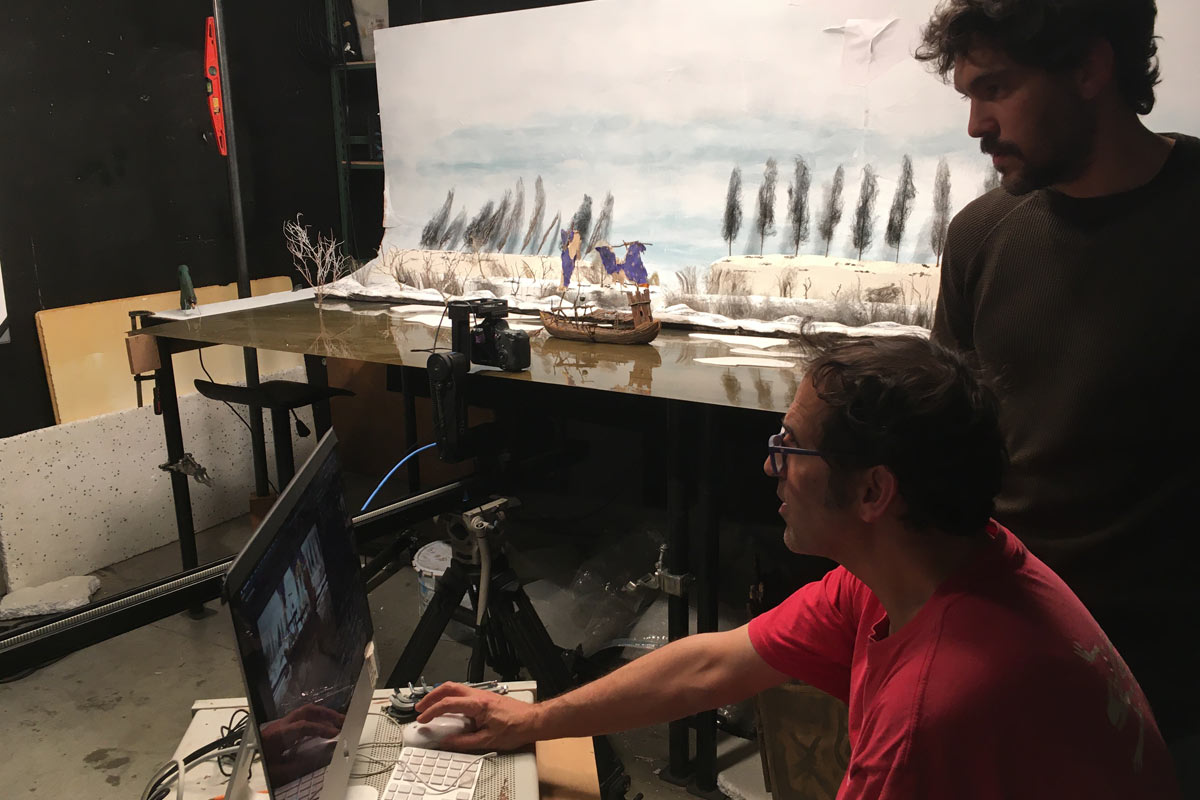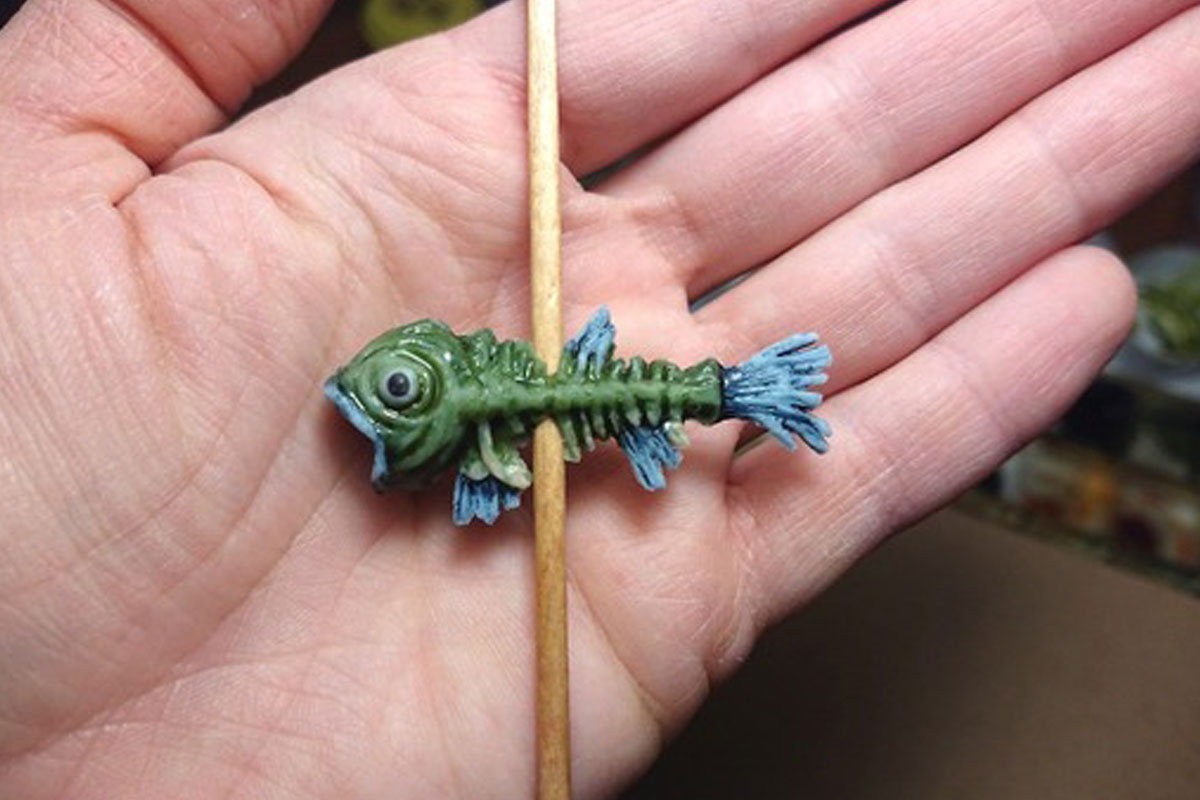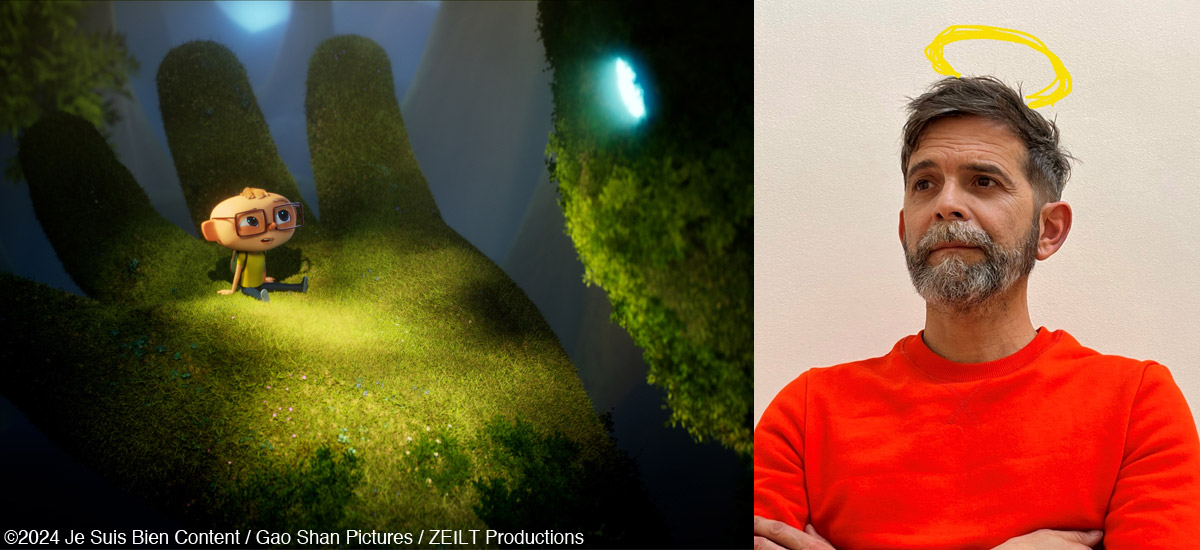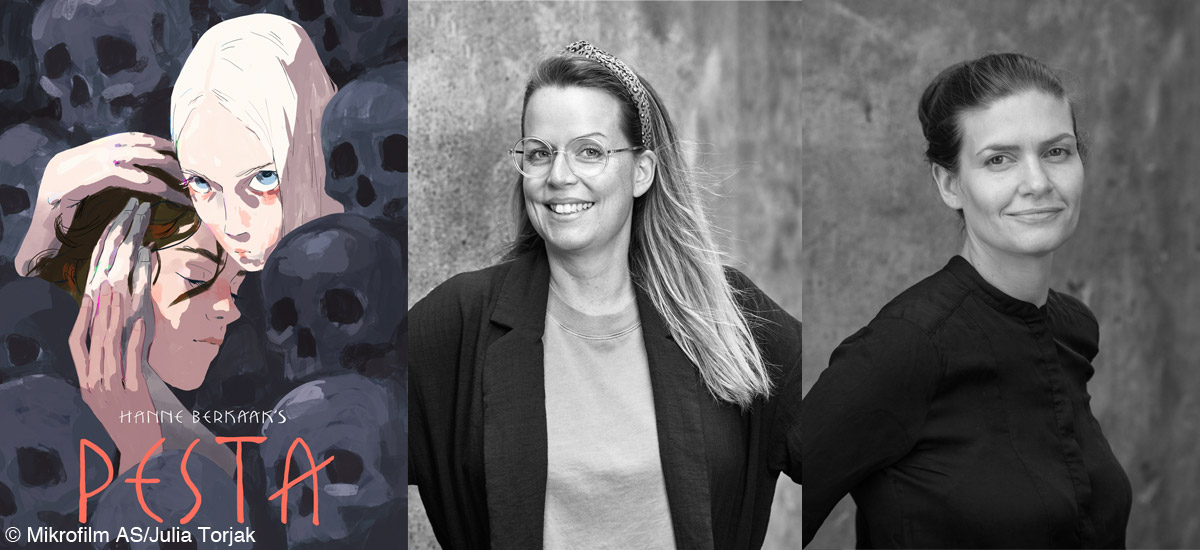(Status: In Development)
Synopsis
In a medieval world of frost, fog and famine, Anselmo, an old monk, once loved and now rejected, leaves his hermitage to find a home for the wild, hungry child who torments his loneliness. He encounters a strange boat guided down the Po by a child king, mist monsters, pirates, mermaids, a giant pumpkin, and the devil himself.
The journey home won’t be easy. Not without overcoming famine and coming to terms with his past.
The Treasure of the Wyrm
Director: Francesco Vecchi
Scriptwriters: Irene Gallina, Stefano Cattini, Stefano Ascari, and Francesco Vecchi
Main Producer: Matteo Pecorara (Small Boss, Italy)
Co-Producers: Luc Camilli (Xbo films, France), Martin Vandas (MAUR film, Czech Republic), and Stefano Cattini (Doruntina Film, Italy)
Target audience: Family
Technique: Stop-motion and 2D digital
Format: 80’
The Treasure of the Wyrm is an intriguing stop-motion feature film project that was pitched at Cartoon Movie 2024. The film’s story is based on Il Tesoro del Bigatto (English: The Treasure of the Wyrm), the second part of Giuseppe Pederiali’s long-selling historical fantasy trilogy set in early medieval Italy. It will depict an adventure featuring characters with a unique design, an exquisite fusion of comicality and maturity, in a fantasy world with a mystical atmosphere. We expect it to be an attractive film for a wide range of ages.
We heard the story behind the film project from Francesco Vecchi, the director and a co-scriptwriter, and Matteo Pecorara, the main producer.
Interview with Francesco Vecchi and Matteo Pecorara
Hideki Nagaishi (HN): Could you please briefly introduce to us the original Italian classic novel Il Tesoro del Bigatto? And why did you want to develop an animation adaptation of the novel, and what had solidified your decision to embark on the project?
Francesco Vecchi: Il tesoro del Bigatto is a novel written in 1980 by Giuseppe Pederiali. It is the second part of an ideal fantasy trilogy with Le città del diluvio and La Compagnia della Selva Bella. The novel is set at the end of the year 1076, in a setting rich in fantastic elements. On the Pietra di Bismantova (our Devil’s Rock) lives the hermit Anselmo da Alberone, surrounded by the fame of a saint and constantly tempted by the devil. Anselmo is contacted by Matilda of Canossa, who, together with Pope Gregory VII, is waiting in her castle for the visit of the Emperor Henry IV for a delicate diplomatic mission: he must travel to Aquileia to obtain the Patriarch’s support for the papal party.
The two elements that fascinated me and led me to make an animated film of it are the humor that flows from the dialogues and situations, and the mysterious universe in which the characters move. Understood as fantastic creatures and misty landscapes.
HN: What do you think are the key points of this animated feature film that would attract the potential audience?
Francesco Vecchi: There are several reasons why the movie will appeal not only to children, but also to other age groups up to adults.
First of all, Saint Anselm’s journey is seen through the eyes of children. They are also the driving force behind his development, more or less consciously. This creates a strong empathy with the younger audience.
Another key element is mystery, conveyed by the misty landscape, the fantastic creatures, and also the ambiguity of Galaverna, the villain of the story, who always hovers between the ridiculous and the diabolical. Along with the mystery, we also find fear, a fascinating emotion for audiences of all ages, even for children, as long as it is manageable and does not exceed their emotional limits.
Above all, the movie wants to make people laugh, through its funny characters and the grotesque situations they find themselves in. As for the design of the characters, every time the project is presented or I see it, teenagers are very fascinated by the aesthetics of not only the main characters, but also the secondary characters.
Finally, the “river” setting of the story is a fascinating novelty.
Matteo Pecorara: Stop-motion animation has been back in theaters for a few years now. We immediately think of Aardman’s productions, of course, but also of Claude Barras’ My Life as a Zucchini or, more recently, Jim Capobianco’s The Inventor. The dynamism of this field is due as much to the public’s desire to rediscover the authenticity of this technique as to the visual innovation brought about by digital technologies. Thus, freed from its obsolete appearance and modernized by a new generation of filmmakers, stop motion can now be present in all areas of cinema, with freedom and boldness. This is exactly what The Treasure of the Wyrm wants to do in the field of adventure cinema, but in a decidedly European key, with humor, imagination, eccentricity and lightness. We want to offer audiences an adventure film that breaks with the aesthetics and codes of animated children’s cinema. A film that teaches children about relationships with others, commitment to a group and a cause, solidarity in times of crisis: complex but topical themes that cinema can address in a whimsical way.
HN: How did this film project start? Have you reached any major milestones or turning points in the project so far?
Francesco Vecchi: The project was born between two glasses of beer. Stefano Cattini (the other Italian producer) had shown a short movie of mine in Parma. We got to know each other and one night he told me about Pederiali’s book and asked me if I was interested. I replied that there were things that interested me, like the fantastic creatures and the unpredictable direction the story takes in the book. Other things were not. From that moment on, we tried to develop a movie idea. There were many turning points, I would say almost all of them coincided with the entry of new people into the development of the project, from screenwriters to musicians to puppeteers!
HN: Are there any differences between the original novel and this animated feature film? If so, how and what are you adapting or changing from the original novel?
Francesco Vecchi: The story of the movie has changed in so many ways. First, the political-religious context around which St. Anselm’s mission revolved has been removed. Catherine of Canossa (a character still present in the movie script) no longer seeks the old hermit’s intercession to resolve the dispute between the papacy and the empire, but to solve a much more concrete problem: the terrible hunger that is ravaging her lands.
The many characters of the novel have remained the same, but the “weights” of some of them have changed. The three children – Ranin, Vitige and Parpaja – have become much more important. One could almost say that Saint Anselm’s journey is seen through their eyes and is modified according to their presence. What remains, and this is what fascinated me most while reading the book, is the unpredictability of the story. You start following Saint Anselm for a very practical reason (to get rid of the troublesome Ranin) and find yourself in an adventure with absolutely fantastic implications (the search for a giant pumpkin defended by a giant two-headed earthworm).
HN: At your current point in the project, what do you take care in the most during scriptwriting and what kind of difficulties are there? And how are you co-creating with the other three scriptwriters?
Francesco Vecchi: At this stage of writing, with so many characters, the greatest difficulty is not to get lost following each one. The focus must remain on Saint Anselm, his mission and his development. Another difficulty is finding the balance between humor and horror. The grotesque tone of the film must not make us forget that we are addressing children, but at the same time remind us that their parents will also see it.
With the other co-writers we work well, we have to follow all our characters, get into their boat and let the current of the river carry us, without wanting to push the rudder and force the course.
HN: In terms of the visual direction of the film, could you please let us know what you are striving for the most? And what do you take care in the most when designing and creating the visuals of the film?
Francesco Vecchi: Aesthetically, I try to go in two directions. Since I was born in the places where the story takes place, I want to reproduce the feelings I feel and have felt walking through the foggy winter landscape. Every place has its own soul and I want to share the soul of these lands. The other intention is to make people laugh, the grotesque should come not only from the situations but also from the appearance of the characters. The models are not only the films of Monicelli and Fellini, from these lands just look around a bit that inspiration is not lacking.
HN: Regarding the music for the film, what could you share with us at the moment?
Francesco Vecchi: I am really pleased with the musicians who collaborated with us for the teaser, the Ooopopoiooo. They manage to combine great technical mastery with tender madness, another key aspect of this region and the film’s story.


